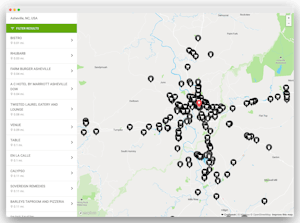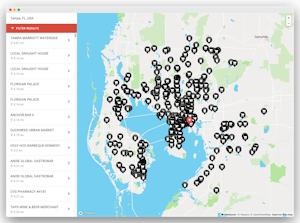When we embarked on the adventure to create a next-generation beer finder, we knew we were up against some serious and formidable challenges. What was currently available on the market had limited functionality only allowing users to find retail locations where breweries sell their beer. The data used for this was hard to maintain and often out of date. Hours were wasted on both the brewery and consumer sides searching for the answer to the same question: “Where can I purchase this beer?”.
The Problem
Our CEO, John Kelley, had a few thoughts on the matter: “We just felt that the current limitations were unacceptable for both the breweries and their customers. Here you have an industry where all three tiers benefit from the sale of this beer, but there is no ability to coordinate. We wondered how much everyone would gain by connecting potential buyers more directly with the beers they were looking for — it is what customers want. If you don’t make it easy for consumers, they will start looking for other options. It was time to get everybody on the same page.”
We identified a common problem between all of our clients. Now we had to rise to the challenge to solve it and we knew that our technology would play a vital role. This is the type of challenge we love at Craftpeak.
A Data Story
In order to help solve the problem, we were going to need a partner that could help us reliably consolidate data across the three tiers for our breweries so we called up our data-loving friends at Lilypad, who offer a CRM designed specifically for beverage sales.
Lilypad was on board and got to work creating an API that we could talk to in order to get the data that we needed. We had to know what accounts carried what beers and if they was consumed on or off premise. This is all data that is included as part of their LP Data service.
“There is no one reason, but many reasons why development like this has not occurred previously. Not only does the data have to be consolidated from the various wholesale partners a brewery is working with, but all the information also has to be cleaned and built into a database that can create a cohesive user experience… no small undertaking,” said Peter, Co-Founder of Lilypad.
We got to work designing and building the application that would present that data in a meaningful way to thirsty beer consumers.
‘Does using this application get a user to their desired goal easily or not?’ To build something that is both beautiful and effective takes lots of planning, debate, and ruthless prioritization at each stage of the build process.
The Process
We started by putting ourselves in the shoes of the customer and posed some questions to get us started. How would they want to search for beer? Would they search for beer based on the location they are in or by the brand they are looking for or both? Would they look for a place to consume beer on-premise or a place to get packaged beer to-to? What if they are not searching for themselves, but for a friend somewhere else or an upcoming trip? These are the questions that our Beer Finder 2.0 would need to answer in a simple and concise way.
Our Technical Director, Julien Melissas, says: “Developing a great application with a beautiful interface is only part of any challenge, the functionality is of equal (or greater) importance. ‘Does using this application get a user to their desired goal easily or not?’ To build something that is both beautiful and effective takes lots of planning, debate, and ruthless prioritization at each stage of the build process. Our goal was to develop a tool the meets the user’s objectives while feeling instantly familiar. This requires stripping away functionality and clutter and focusing on an experience that will delight its users. This is not a destination, but a pursuit, and part of the discipline we try to apply to everything we build at Craftpeak.”.
Our Design Objective:
- It had to be beautifully designed, easy to navigate, and delight users (of course!)
- It had to have the ability to be customized for each of our brewery’s brands
- It had to effectively link potential buyers directly with beers at retail locations
- It had to save our brewery’s staff time
- It had to be automatically updated with data (as opposed to using brewery resources to manually update)
An Elegant Solution
What we came up with is easy to use, fast, and concise in it’s scope. Via our integration with Lilypad, we are able to grab data nightly as to what beers are where, so our breweries can focus on making beer. We even made it so that marketing teams can promote new releases and link customers directly to a pre-filtered list of that brand.
Beer Finder 2.0 can be attached to any website since it lives on it’s own as a dedicated application, and it is quick to setup with customers that are already using Lilypad. For those who are not, we built a slightly more simplified version of the interface that can pull data from a Google Sheet/CSV that is easy to manage.
Take a look at the results and let us know what you think!

